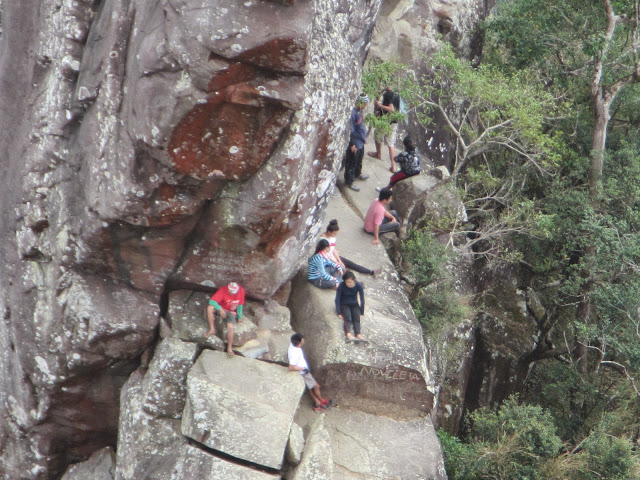
3B Rest Houses which is located in Baltao Subdivision in Antipolo City has six units for rental and each unit has its own swimming pool. Since it is outside the city proper, guests are assured that the place is peaceful and there is privacy since each unit can be affordably exclusively rented just for one group.

Each unit is spacious equipped with bedrooms/restrooms, kitchen with cooking facilities, comfort and shower rooms. It has a freezer where guests can store their food while they are spending time in the resort. Definitely, guests can cook because of the provision of kitchen facilities including grilling and roasting. The dining/multi-purpose hall can accommodate as many as 100 persons.

Our group for instance has occupied a unit where it was equipped with three bedrooms where we rested after an exhausting swim. Others opted to stay in the dining and function hall for the videoki which is also provided. Fortunately, a part of the pool was covered with a shade and so even if it was already almost high noon, some of us still stayed in the pool for a relaxing swim.

Indeed, the place is highly recommended for company outings, family outings, birthdays, weddings, and or any other special occasions. This place can be enjoyed all year round including summer where everybody wants to escape the hot temperature in the metropolis. This is the best option to go considering its proximity from Manila.

Our group who stayed here for one day from 7:00 A.M. to 6:00 P.M. enjoyed our time as we cooked our food, alternated to have the videoki not to mention the on and off swim in the pool. We grilled fresh bangus and tilapia as well as the juicy pork and chicken barbecue. Food then was overflowing with drinks from juice, soft to hard liquors.

The dining and multi-purpose hall can be used for corporate meetings, team-building activities, conferences and events like wedding and baptismal receptions. Our group used this part of the resort not only to dine but to have our videoki and a send-off party activity.

Standing from any part of Antipolo City with an elevation of 156 meters or 512 feet above sea level gives one a breathtaking and rewarding sight of Metropolitan Manila which is mostly consist of low lying areas. The city lights or the amazing nightscape of the metro can be best viewed from the resort with much splendor.

Aside from the spacious multi-purpose hall, bedrooms, receiving hall and swimming pool resting podiums, two spacious balconies are also available on both sides of the rest house located at the second level. This can also serve as view decks or watch bays if parents would like to monitor how their kids are doing while at their playful swim.

Each of the six units of the rest houses is equipped with spaces for parking since most of the guests have their own cars and vehicles with 24-hour security services so that the parked cars and vehicles will be safe.

Please note that only one unit of the six rest houses for rent is featured here. Each unit may vary as to its size, facilities and even the size of the pool. The third level of all units are accessible to the parking area since the upper part is within the road level.

The following are their rental rates:
3B 1-4 : Php6,000 for 11 hours
3B 5: Php7,000 for 11 hours
3B 6: Php10,000 for 11 hours (with Aircon & good for 20-30 pax)
Guests can call for reservations. Reservations are not accepted in their Facebook page.
For more details, use the following contact details:
Landline: +632.697.2793
Mobile, SMART: 0918.5011.152
Mobile, GLOBE: 0917.2570.081
Phone: 20 69727930 / 9172570081 / 09185011152
HOW TO GET THERE
Click this link for your guide.











